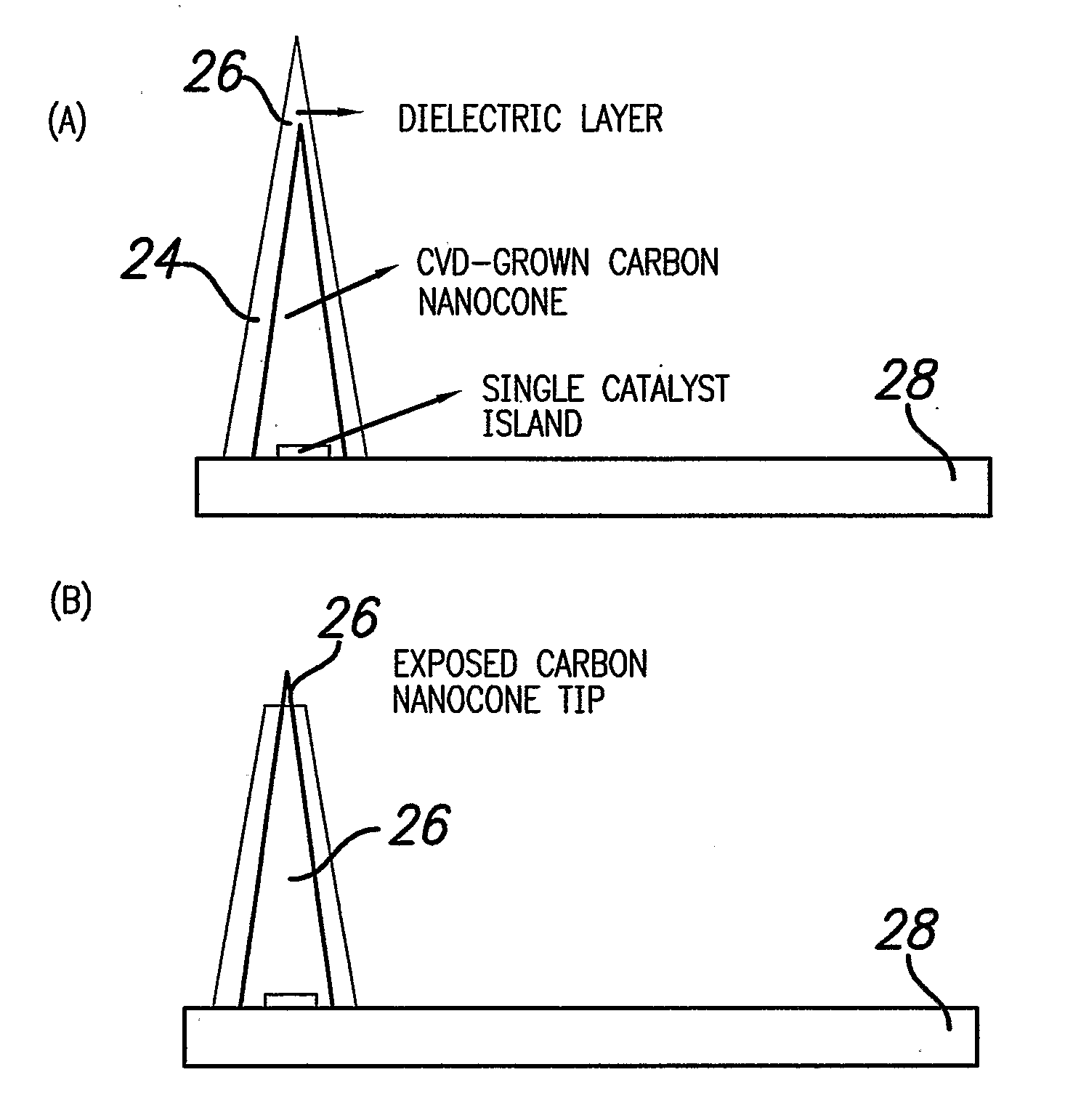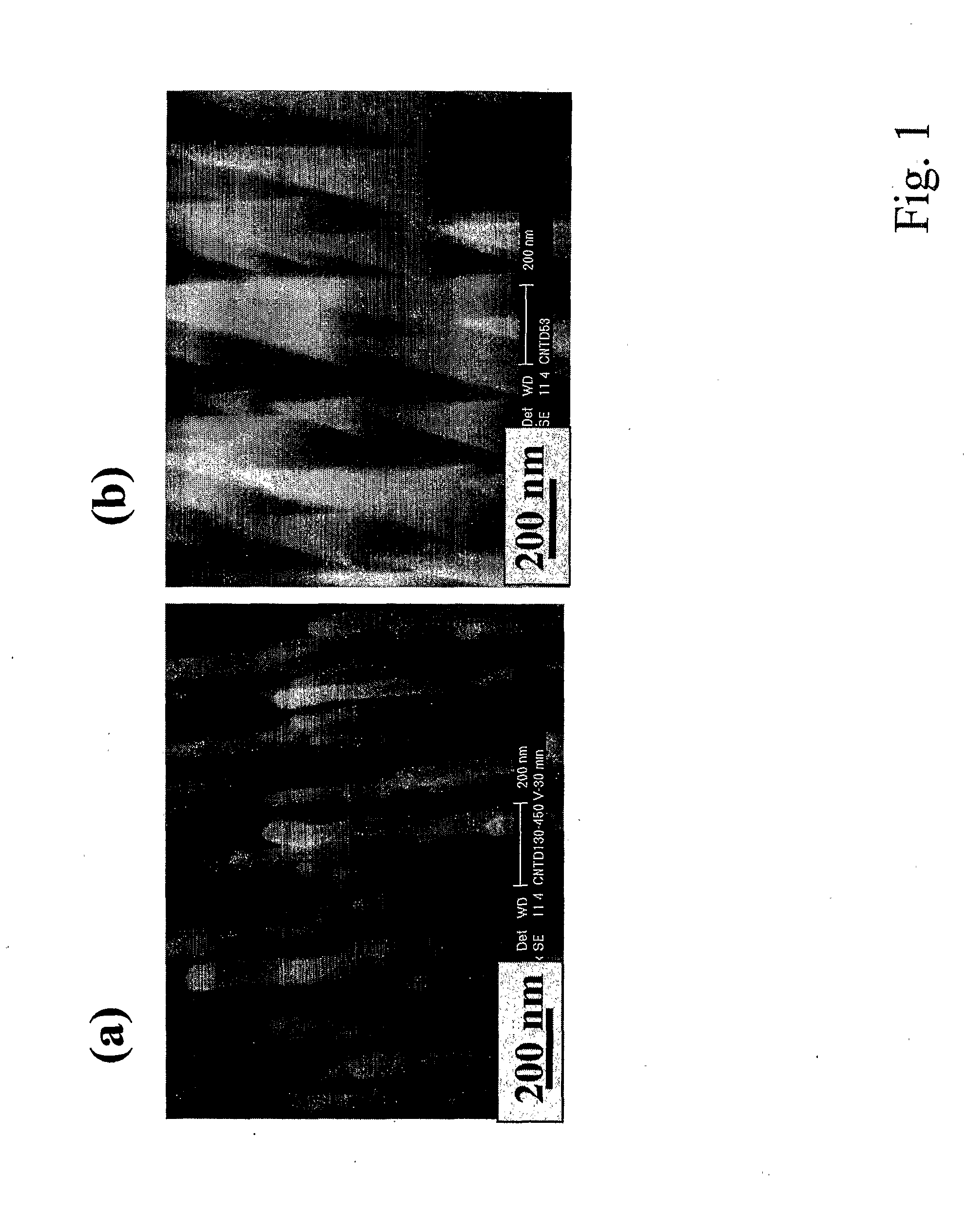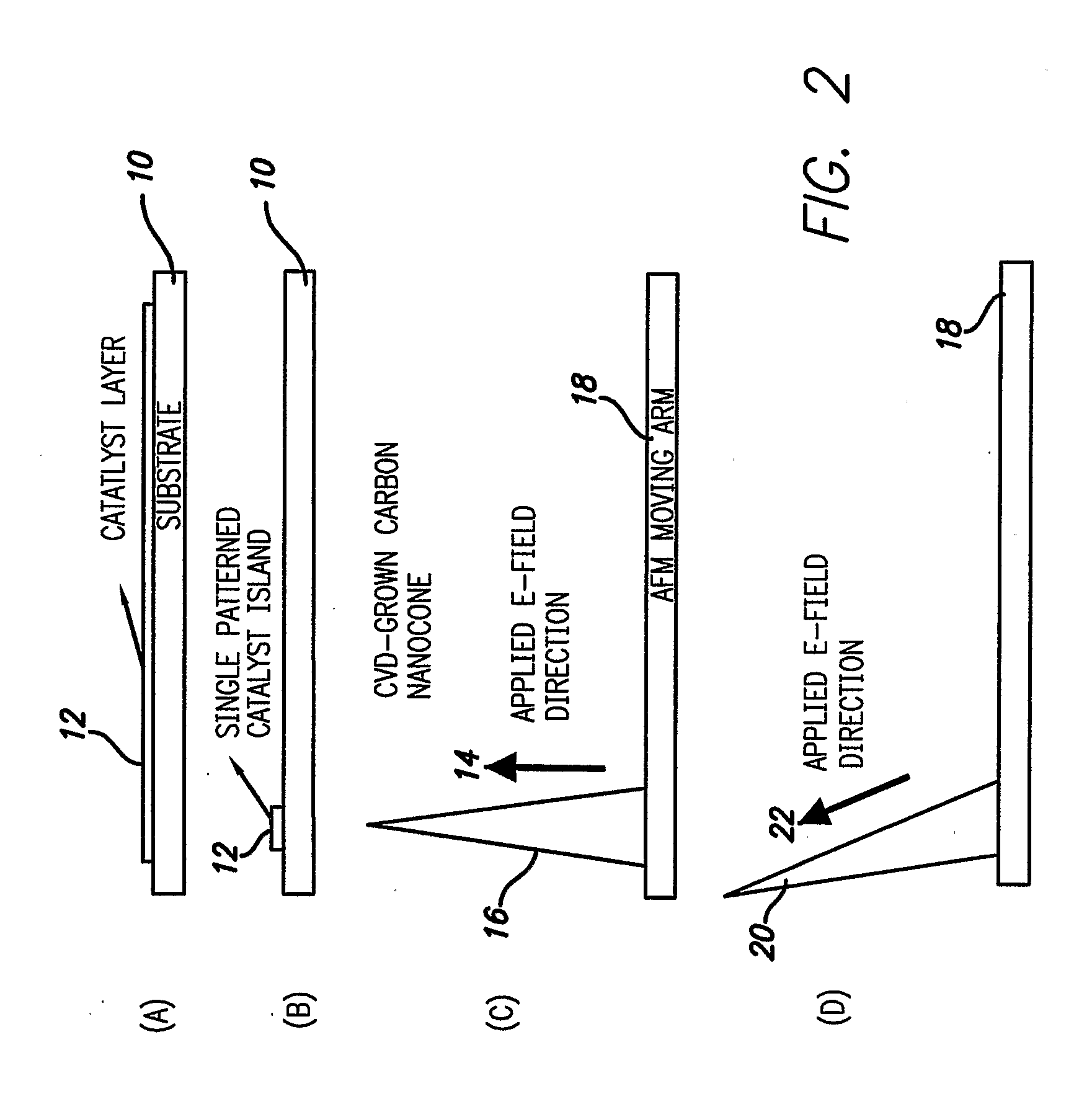Nanotube-Based Nanoprobe Structure and Method for Making the Same
- Summary
- Abstract
- Description
- Claims
- Application Information
AI Technical Summary
Benefits of technology
Problems solved by technology
Method used
Image
Examples
Embodiment Construction
(1) High Aspect-Ratio Nanocone-Shaped Nanotube AFM Tip
[0038]One way of making the nanotube tip less fragile is, according to this invention, to make the nanotube tapered into a nanocone geometry. The desirable configuration is to provide a very sharp tip for high resolution AFM imaging, e.g., the tip radius of curvature of at most 15 nm, preferably 5 nm or less, and even more preferably 2 nm or less. For the purpose of mechanical sturdiness of the nanotube probe in the absense of an AFM pyramid base structure, the cone structure needs to have a substantial base cone diameter. The desirable cone base diameter is at least 100 nm, preferably at least 300 nm, even more preferably 500 nm. To simultaneously provide a small-diameter, sharp tip for high resolution AFM analysis and mechanical stability with a large diameter cone base, a certain minimal high aspect ratio of the nanocone structure is desirable. For example, the ratio of the nanocone length / cone base diameter in this invention ...
PUM
| Property | Measurement | Unit |
|---|---|---|
| Thickness | aaaaa | aaaaa |
| Angle | aaaaa | aaaaa |
| Angle | aaaaa | aaaaa |
Abstract
Description
Claims
Application Information
 Login to View More
Login to View More - R&D
- Intellectual Property
- Life Sciences
- Materials
- Tech Scout
- Unparalleled Data Quality
- Higher Quality Content
- 60% Fewer Hallucinations
Browse by: Latest US Patents, China's latest patents, Technical Efficacy Thesaurus, Application Domain, Technology Topic, Popular Technical Reports.
© 2025 PatSnap. All rights reserved.Legal|Privacy policy|Modern Slavery Act Transparency Statement|Sitemap|About US| Contact US: help@patsnap.com



